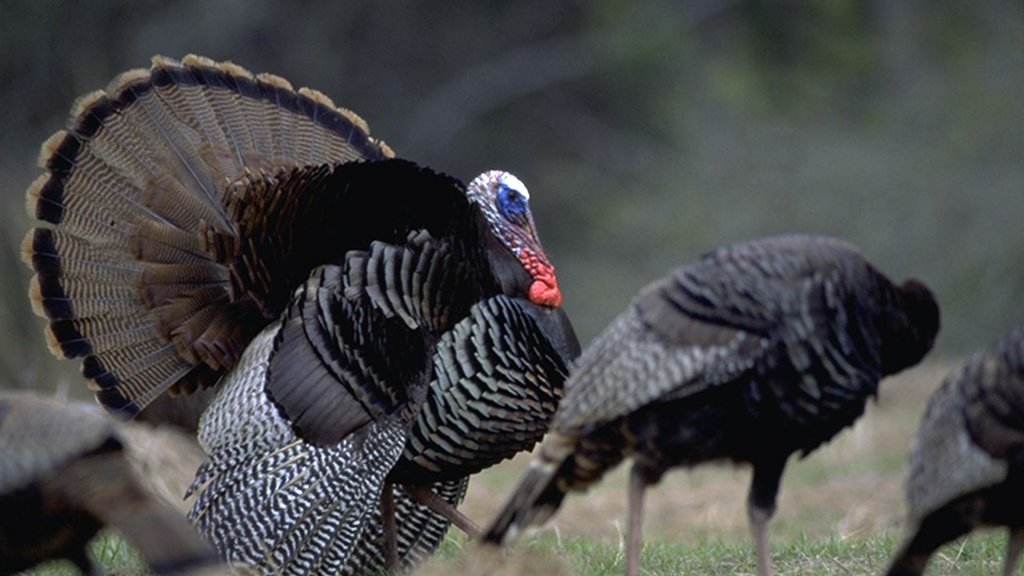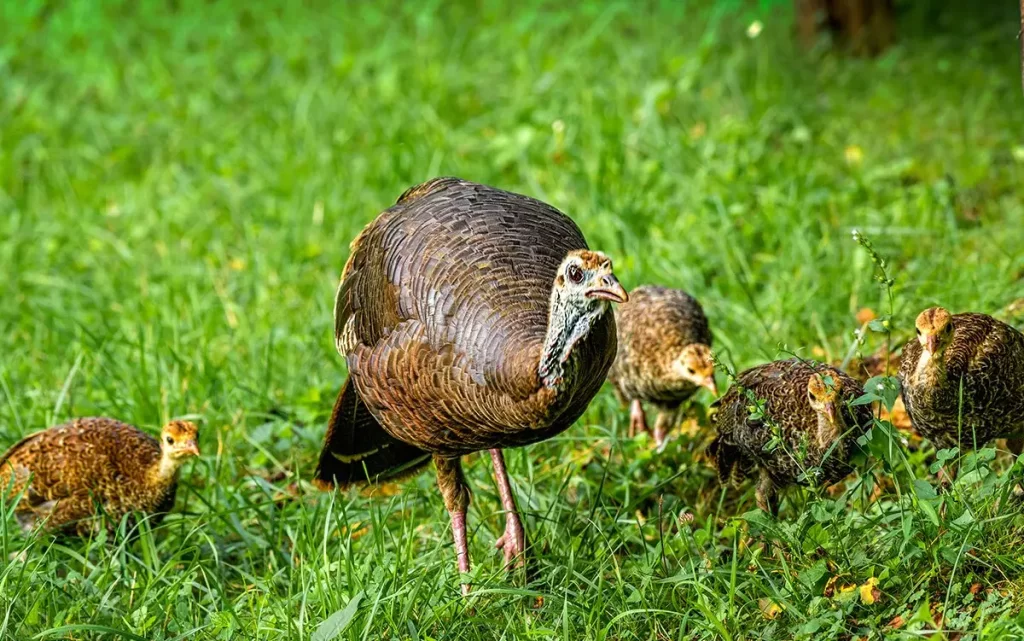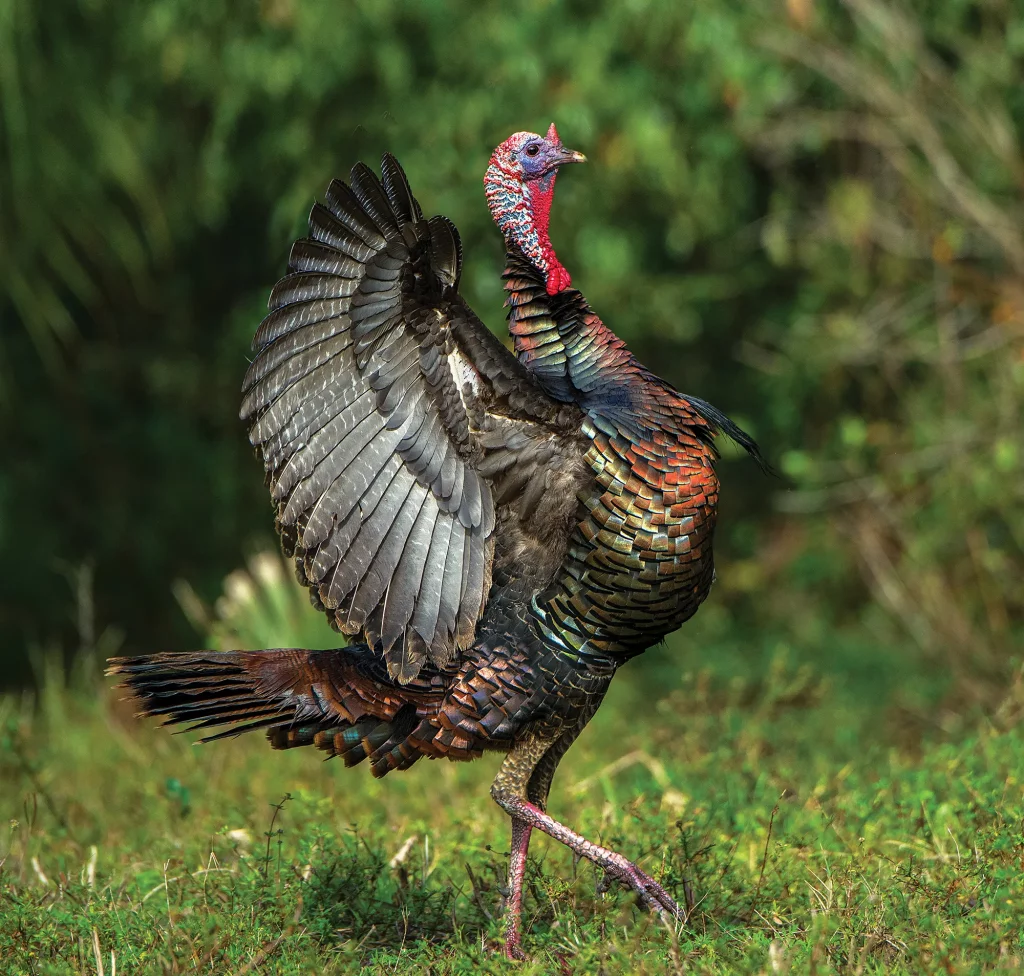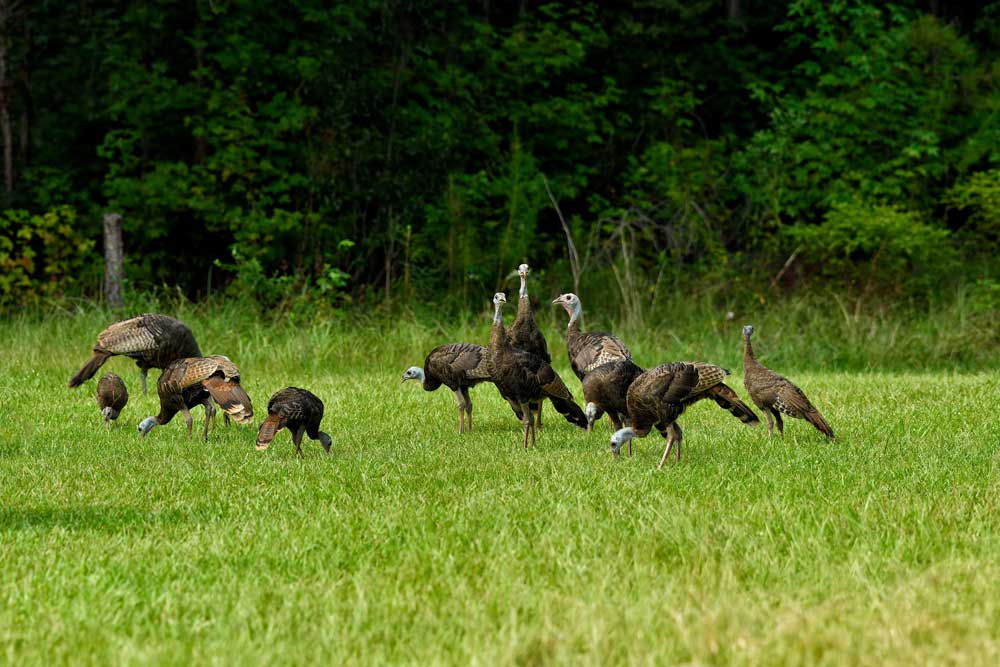Can young male turkeys, known as jakes, start their own families? It’s a curious question about these feathered creatures. Turkeys, like many animals, have their unique mating rituals. These rituals are an important part of their lives, influencing their population and behavior.
The roles of dominant toms, the challenges young jakes face, and hens’ preferences in choosing their mates all contribute to this fascinating process.
So, learn and find out if Jake can breed hens or not, and find out how turkey plays a role in expanding their population. There will be no problem after this.
Understanding Turkey Breeding Patterns
Jake Turkeys have a specific way of going about their mating rituals. It all starts in February when toms, the adult male turkeys, begin their distinctive gobbling and strutting displays. This behavior isn’t just for show; it’s a way for them to establish their social hierarchy before the breeding season kicks off in mid to late March. During this time, they’re vying for the attention of the hens, trying to prove who’s the most dominant in the group.
The Role of Dominant Toms in Breeding

In turkeys, the dominant tom holds an important position in breeding. If, for any reason, the top tom is removed from the group, it can disrupt the breeding dynamics. The other toms in the close-knit group might not immediately step up to take his place. Hens don’t just pair up with the next available gobbler.
Challenges Faced by Young Male Turkeys
Among turkeys, the adolescent birds called Jake turkeys demonstrate unique mating rituals. Eager to participate in breeding efforts, these young male turkeys face significant challenges. Their sperm is often incapable of fertilizing eggs, rendering their attempts unsuccessful. This stage of their mating rituals is a crucial part of their development, leading them to mature into successful breeders eventually.
Hen’s Selection Process in Mating
When it comes to choosing a mate, hens have their own criteria. They don’t simply pair up with the first gobbler they come across. Instead, they engage in a selective process. Hens are known to move around, visiting different gobblers and breeding with the most dominant ones. This behavior is spread out over about ten days. Doing so increases the likelihood of a successful nest with fertile eggs.
Maximizing Nest Success for Turkey’s Population Growth

The success of turkey nests is crucial for the overall population growth. When dominant toms are allowed to breed with most hens in late March and early April, it sets the stage for the best breeding time. This, in turn, leads to a higher number of healthy poults being hatched. It’s a strategic natural process that contributes significantly to the thriving of the local turkey population.
The Science of Turkey Reproduction
Turkey’s reproduction is a complex biological process. It involves complex hormonal changes and finely tuned behaviors to ensure successful breeding. Understanding this scientific aspect sheds light on the fascinating turkeys and the questions of their reproduction.
Factors Affecting Fertility of Turkey Eggs
Several factors can influence the fertility of turkey eggs. One key factor is the frequency of mating. Hens that mate multiple times with different dominant gobblers over 12 days are more likely to have fertile eggs. Additionally, the timing of egg laying after mating plays a crucial role. Eggs that come after a little time of breeding tend to have higher success rates than those with the sperm load.
Impact of Hunting on Turkey Breeding Season
Hunting has a notable impact on turkey breeding season. As toms get harvested, the activity of gobbling decreases. This is because fewer birds are available to breed, and the remaining birds may gobble less due to disruptions in the pecking caused by hunting. This behavior change can have ripple effects on the overall breeding dynamics of turkey populations.
Predator Swamping – A Survival Strategy

Predator swamping is a survival strategy employed by turkeys. It involves synchronizing the nesting period so predators can’t target all nests before the poults hatch. This strategy is more effective when hens start their nests over several weeks. It ensures that poults hatch simultaneously, making it harder for predators to target them simultaneously.
Nesting Behavior and Its Influence on Poults’ Survival
The nesting behavior of hens plays a crucial role in the survival of poults. When hens start their nests over several weeks, it can lead to a more staggered hatching period. This can result in a varied size difference among the surviving poults. Consequently, hens may not like to group their poults in the last of summer, increasing their chances of becoming prey.
Conclusion
Now, when it comes to the question of whether turkeys can breed a hen, the answer is “NO.” Jakes, which are young male turkeys, have some growing up to do before they can successfully breed hens. Their sperm isn’t quite ready for the job, and it takes some time for them to become mature gobblers.
Understanding turkey breeding patterns reveals that dominant toms, the older and more experienced males, play a crucial role in mating. So, the complex method of turkey breeding highlights the importance of maturity and dominance in successful reproduction.
By understanding and respecting these natural processes, we can contribute to the conservation of these remarkable birds.

